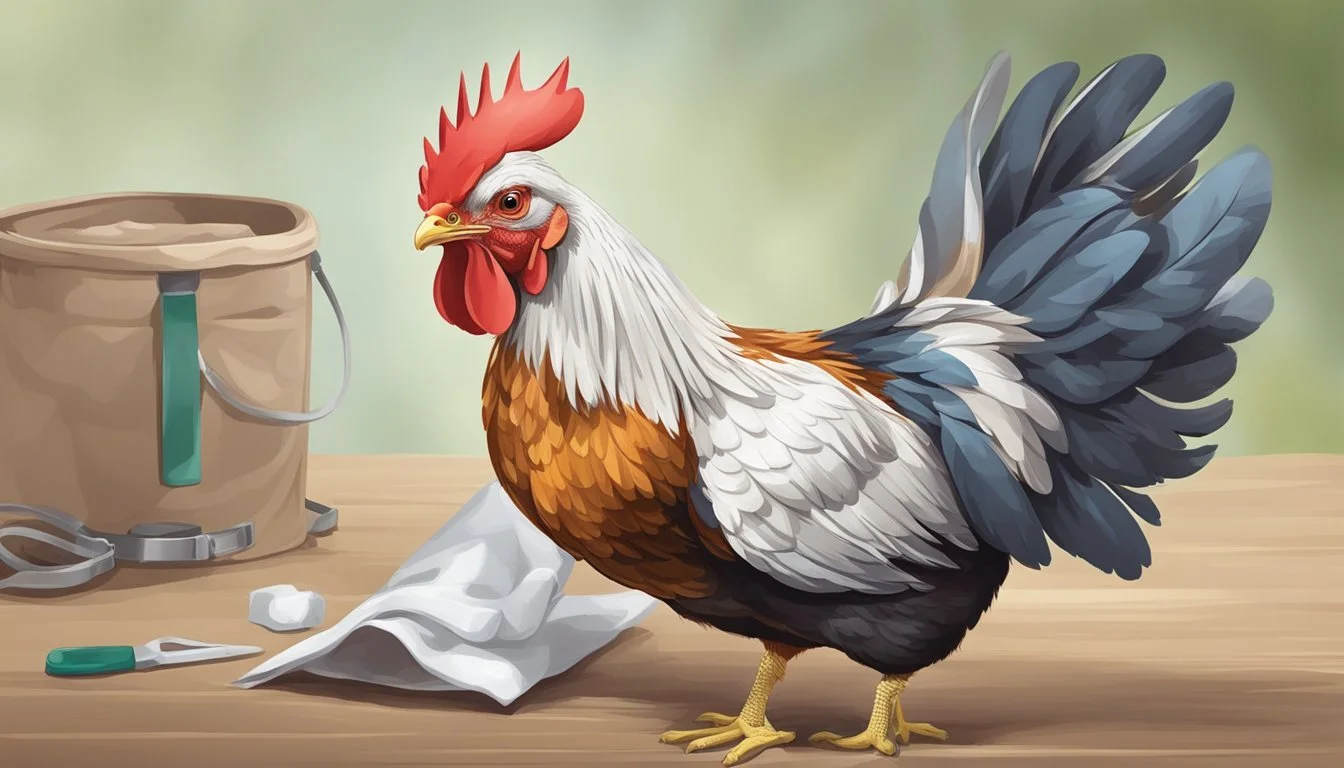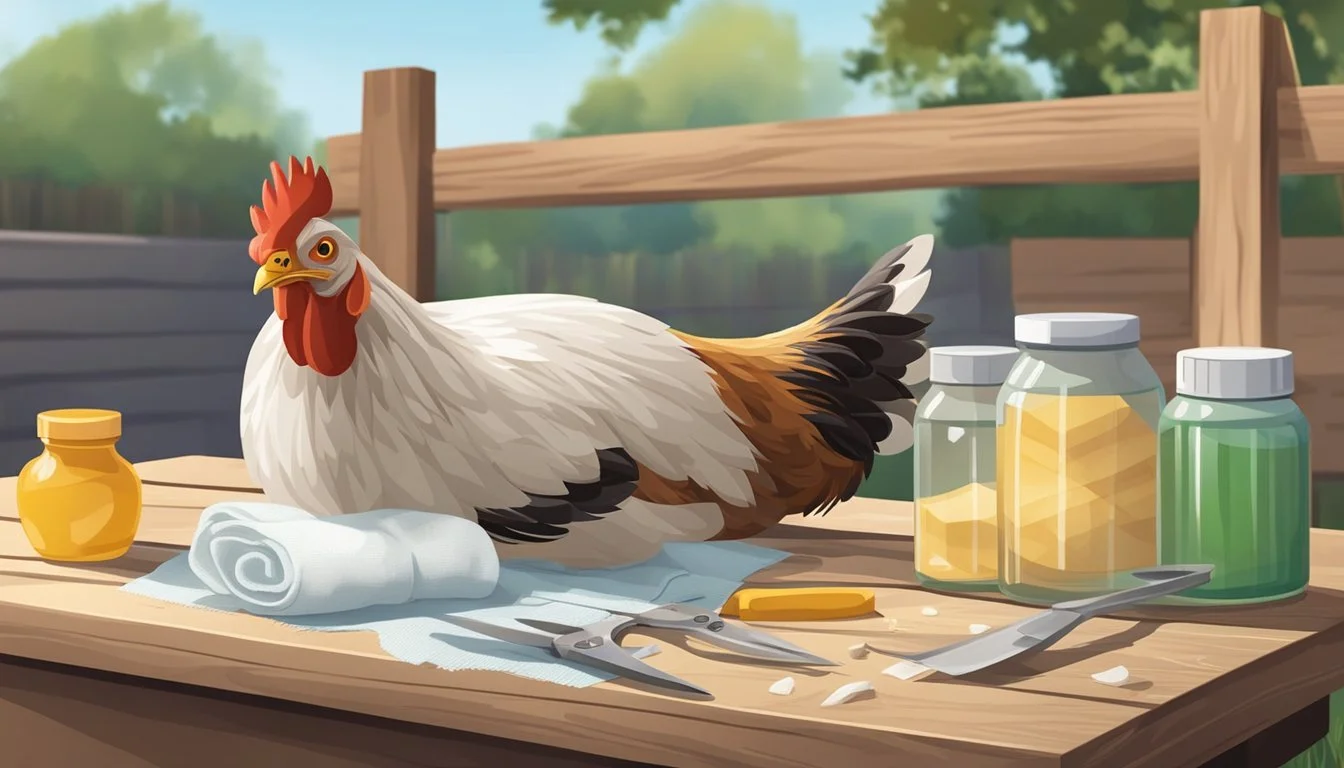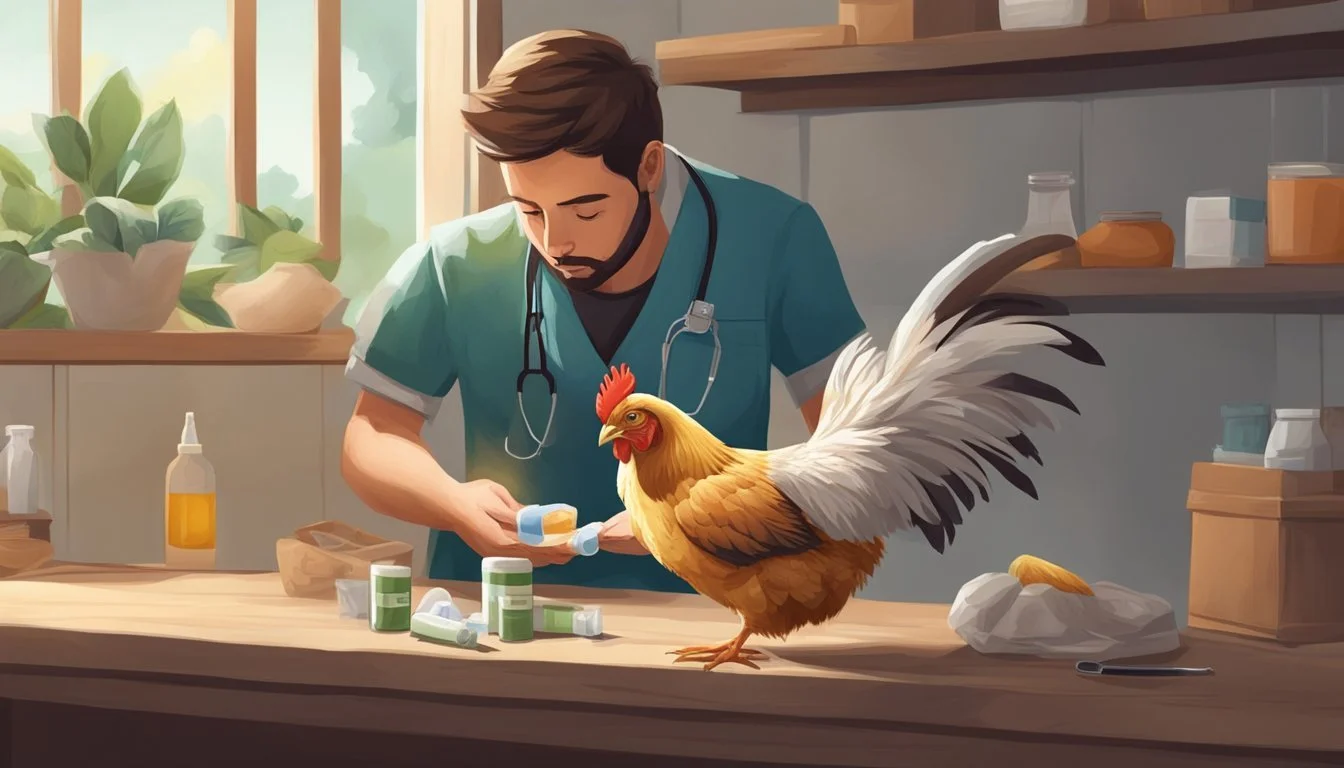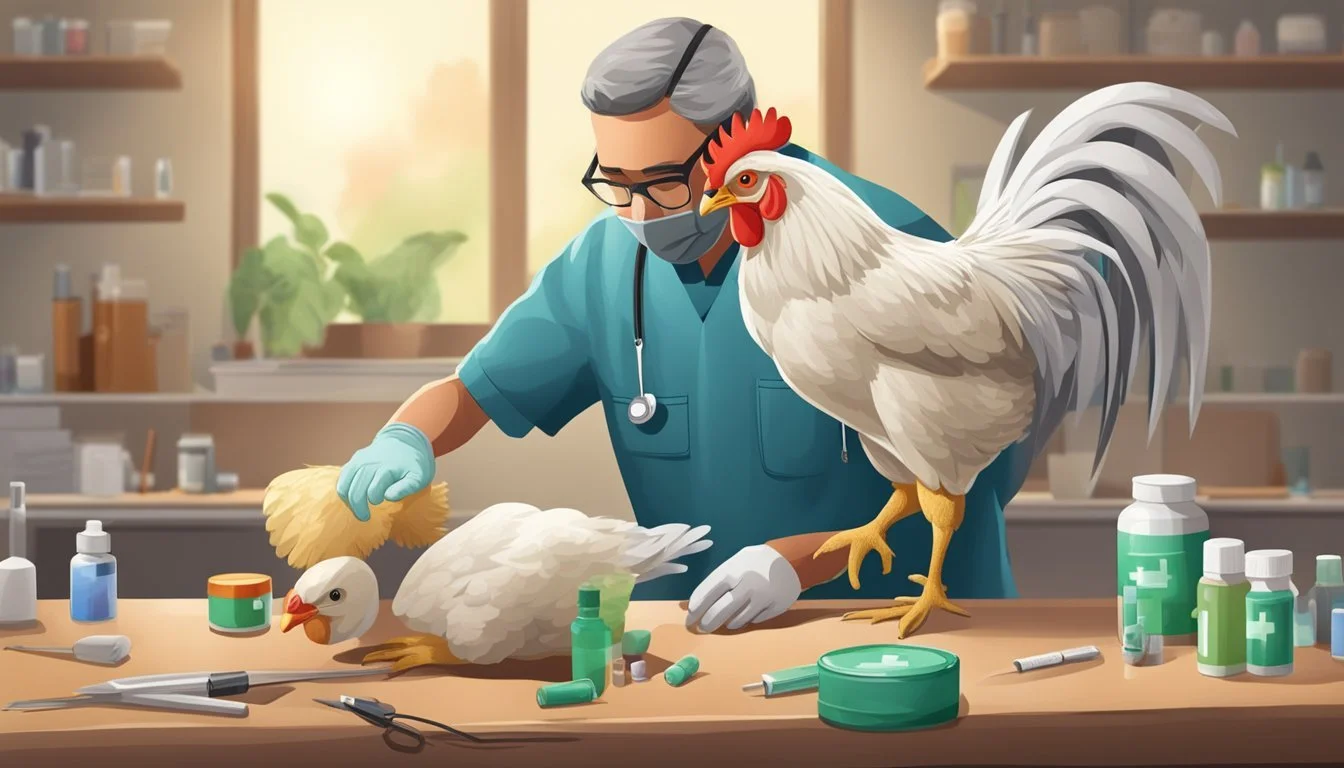What are the Best Practices for Chicken First Aid?
Essential Tips for Poultry Health Management
Caring for backyard chickens goes beyond providing them with good nutrition and a safe environment. Knowing how to respond appropriately when a chicken is injured or falls ill can make a significant difference in the outcome. Establishing best practices for chicken first aid is essential, as it enables poultry keepers to address emergencies promptly and effectively.
One of the key components of addressing chicken health concerns is the creation of a comprehensive first aid kit tailored specifically to poultry. Such a kit should contain a range of items to clean wounds, control bleeding, and prevent infections, among other medical needs. Keeping these supplies on hand ensures that keepers are ready to take immediate action to mitigate further harm and alleviate the chicken's discomfort until professional veterinary care can be obtained if necessary.
In addition to assembling a first aid kit, it's important for chicken caretakers to familiarize themselves with common avian ailments and injuries. Basic knowledge of how to handle a distressed or hurt chicken, the correct way to administer treatments, and when to seek professional help is paramount to sustaining the welfare of these birds. By adhering to a set of well-established first aid protocols, keepers can enhance their ability to safeguard the health of their flock.
Understanding Chicken First Aid
Effective chicken first aid involves prompt and correct responses to health emergencies. Recognizing signs of distress and having the necessary supplies ready are key to the successful care of injured or sick chickens.
Basic First Aid Principles
One should always prioritize safety and prevention. A well-stocked first aid kit is essential for addressing chickens' emergencies. Basic supplies include antiseptic wipes, gauze, adhesive tape, and scissors. It's imperative to handle the bird gently but securely to minimize stress. In serious cases, it's recommended to consult a veterinarian who specializes in poultry.
Recognizing Common Chicken Injuries and Illnesses
Chickens may encounter various issues, ranging from mild to life-threatening. Lacerations, fractures, parasitic infections, and respiratory illnesses are common. Signs that a chicken is unwell include lethargy, loss of appetite, abnormal breathing, or changes in behavior or appearance. Applying the correct first aid processes, like cleaning and dressing wounds using supplies like Vetericyn spray and monitoring the bird's health is vital. They should be isolated from the flock to prevent the spread of potential illnesses and to facilitate recovery.
Preparing Your First Aid Kit
When raising chickens, it is imperative to be ready for any type of injury or ailment that could affect them. A well-prepared chicken first aid kit should contain the necessary tools and medications to handle common emergencies.
Essential Tools and Supplies
Essential tools and supplies are the backbone of an effective chicken first aid kit. The stock should include:
Scissors and nail clippers for trimming feathers or nails as needed.
Disposable gloves to maintain hygiene during treatment.
Gauze pads and vet wrap to dress wounds and to provide support for sprains.
Non-stick gauze pads to cover injuries without sticking to the wound.
Super glue can be used for minor skin tears, acting as a temporary sealant.
A flashlight or headlamp ensures visibility during nighttime emergencies.
Popsicle sticks serve as splints for injured legs or wings.
Cornstarch can help to stop bleeding from minor cuts or broken nails.
Medications to Include
When filling your kit with medications, consider including:
Neosporin or triple antibiotic ointment without pain relief which are safe for chickens to prevent infections in wounds.
Saline solution or chlorhexidine solution for cleaning wounds or flushing eyes.
Antibiotics only to be used under veterinary guidance for bacterial infections.
Vitamins and probiotics to support a chicken’s recovery after stress or illness.
Syringes without needles for administering accurate doses of liquid medication or for hydrating a chicken that's unwilling to drink.
Antiseptic spray to swiftly clean wounds before dressing.
Keeping these items organized and regularly checking expiration dates ensures prompt and effective response to injuries, promoting a quick recovery for the injured chicken.
Immediate Response to Injury
In the critical moments following a chicken injury, quick and informed actions are paramount. Properly assessing the situation and providing immediate care can greatly influence the recovery process and prevent further complications.
Assessing the Situation
When a chicken is injured, the first step is to quickly yet calmly evaluate the severity and type of injury. If the chicken has sustained wounds from a predator attack, examine for punctures or lacerations. For any type of wound, bleeding control is a top priority. It's vital to wear gloves to protect both the handler and the bird from possible infection.
Providing Initial Care
Once the injury is assessed, immediate care should commence. For bleeding, apply pressure using a clean cloth or gauze and consider the application of styptic powder to help clot the blood. In cases of bumblefoot, a common chicken foot infection, a gentle cleaning of the foot with Epsom salts may be required. Use tweezers to remove any debris from the wound. A diluted solution of hydrogen peroxide can serve to disinfect minor cuts, but should be used sparingly as it may also harm healthy tissue. After cleaning, a spray like Vetericyn can be utilized to promote healing. If available, apply the appropriate dose of pain relief medication specifically formulated for poultry. Always follow up with a veterinary professional for further instructions, especially in cases of serious injuries or if signs of infection develop.
Caring for Specific Conditions
When addressing specific health conditions in chickens, it’s crucial to understand the appropriate treatment protocols for common issues such as bacterial infections, wounds, parasites, and illnesses. Utilizing the correct products and measures is vital for the chicken’s recovery process.
Addressing Bacterial Infections
For bacterial infections, chickens may benefit from the application of an antibiotic ointment such as Neosporin to prevent the spread of bacteria and aid in healing. Consulting veterinary advice is recommended when signs of infection persist or worsen. Bacterial infections often require prompt treatment to prevent complications.
Treating Open Wounds and Cuts
Open wounds and cuts should be cleaned gently and then protected. Products like Vetericyn can be used for sanitizing the area. For minor injuries, blu-kote, a gentle antiseptic, may help protect the wound from pecking and infection. In some cases, bandaging the wound might be necessary to prevent further pecking or injury. Always ensure the wound is kept clean to prevent infection.
Handling Parasite Infestations
Parasites such as mites can be addressed using permethrin dust or diatomaceous earth, which can be spread in the coop and nesting areas to eliminate infestations. Regular checks are essential to ensure that parasites are kept under control and to maintain the health of the flock.
Managing Illnesses and Diseases
For illnesses like coccidiosis, which can present with symptoms such as diarrhea, the use of medications like amprolium (found in commercial products like Corid) may be effective. In cases of illness or unusual symptoms, seeking veterinary advice is important. Some keepers also implement natural remedies, but these should be used with caution and typically not as a substitute for professional treatment.
Post-Treatment Care and Observation
After administering first aid to an injured chicken, the subsequent post-treatment care and observation are critical for recovery. Ensuring a controlled recovery environment and diligently monitoring the chicken's progress and signs of improvement are the cornerstones of successful post-treatment care.
Creating a Recovery Environment
The first priority in post-treatment care is to establish a recovery area where the chicken can be isolated from the rest of the flock. This not only prevents further injury but also reduces stress on the bird, which is essential for healing. An ideal recovery space should be clean, quiet, and safe, with access to fresh water and food. It is recommended to line the area with old towels for comfort and sanitation purposes.
Hydration and Nutrition: Keep the injured chicken hydrated with access to fresh water and consider adding electrolytes to the water to help with recovery. Provision of a balanced diet as well as the inclusion of probiotics can support the chicken's immune system during healing.
Monitoring Progress and Signs of Improvement
Close and regular observation of the chicken's condition plays a pivotal role in ensuring a full recovery.
Physical Inspection: Check the wound at least twice a day for signs of infection or deterioration. Observe for behavioral changes that could signal discomfort or distress.
Behavioral Indicators: Improvement is often marked by the chicken resuming normal behaviors such as preening, interacting with caregivers, or showing interest in food. One must watch out for any abnormal behaviors, especially from roosters or strong members of your flock, as these are generally more resilient birds.
Throughout the recovery process, one should consider the use of natural remedies alongside conventional medicine to support wound healing, but only if proven effective and safe for poultry. It is important to remember that every member of the flock is unique, and recovery times can vary. Therefore, personalized care based on individual needs is essential.
Preventive Measures and Best Practices
When dealing with chicken first aid, it is vital to integrate proactive strategies to minimize risks and ensure rapid response during emergencies. The following best practices will equip chicken keepers with effective methods to safeguard their flock's health.
Maintaining Healthy Living Conditions
To deter the onset of health issues, setting up proper living conditions is crucial. Chickens require clean, well-ventilated, and predator-proof coops to thrive. It's essential to use biosecurity measures to prevent diseases, which involve regular cleaning and the disinfection of the coop. Secure the area against predators like raccoons and foxes by reinforcing the coop's structure.
Sanitation: Regular cleaning with safe, effective products such as Vetericyn spray can control the spread of pathogens. Avoid harsh chemicals like rubbing alcohol, which can be harmful to chickens.
Pest Control: Implementing measures to keep pests at bay will minimize the risk of disease transmission.
Regular Health Checkups and Vaccinations
Routine examinations by a veterinarian, preferably one specializing in avian care (avian vets), are crucial for early detection and prevention of diseases. Vaccinations are recommended as part of a preventative health program.
Checkups: Establish a schedule for health evaluations and adhere to the recommended vaccination plan.
Disease Control: Learn from vets about common ailments and the appropriate procedure to handle them.
Education and Training
Educational preparation enables chicken keepers to perform proper first aid. They should familiarize themselves with common chicken ailments and understand the use of products like Preparation H for prolapse, or flour to stop bleeding in minor injuries.
First Aid Kit: Assemble a chicken first aid kit including items like q-tips and Vetericyn spray.
Skills: Acquire first aid skills through local workshops or online courses, ensuring readiness for emergencies.
In summary, the successful treatment and prevention of chicken health issues rely on a combination of vigilant care, regular health checkups, and informed preparation. By following these practices, chicken keepers can greatly reduce the occurrence of illnesses and injuries, ensuring a healthy and thriving flock.





